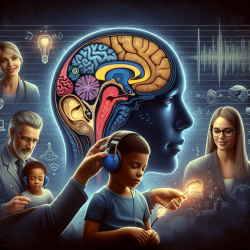Understanding Auditory Processing Disorder: An Academic Exploration
In the realm of special education, understanding the intricacies of various disorders is crucial for educators and therapists alike. One such disorder that presents unique challenges is Auditory Processing Disorder (APD). This blog delves into the key aspects of APD, providing insights into its symptoms, causes, diagnosis, and intervention strategies.
What is Auditory Processing Disorder (APD)?
Auditory Processing Disorder is characterized by listening difficulties arising from dysfunctions within the central auditory nervous system (CANS). It's important to note that individuals with APD typically have normal hearing sensitivity. The terms “Auditory Processing Disorder” and “Central Auditory Processing Disorder” (CAPD) are often used interchangeably in literature.
Recognizing the Signs and Symptoms of APD
Identifying APD can be challenging, as its symptoms often overlap with other disorders. According to the American Academy of Audiology (AAA) and the American Speech-Language-Hearing Association (ASHA), common signs include:
- Difficulty understanding speech in noisy environments
- Challenges with rapid, muffled, or distorted speech
- Frequent requests for repetition
- Difficulty following verbal instructions
- Misinterpretation of sarcasm or jokes
- Distractibility and academic difficulties
- Challenges in sustaining attention and localizing sound
It's crucial to remember that these signs are not exclusive to APD and may coexist with other disorders, such as language or attention deficits.
Exploring the Causes of APD
The exact etiology of APD is often unknown, but several factors may contribute, including:
- Age-related changes in CANS function
- Genetic predispositions
- Head trauma or neurological disorders
- Chronic ear infections or ototoxic exposure
- Prenatal or neonatal factors
It is possible for APD to have multiple causes, further complicating its diagnosis and management.
Diagnosis and Testing for APD
Diagnosing APD requires a comprehensive audiologic evaluation (CAE), especially since even mild hearing loss can mimic APD symptoms. Testing is generally recommended for individuals aged seven and older, given the age-related variability in brain function and cognitive status. The evaluation includes a test battery assessing various auditory processes, conducted in a soundproof booth by an audiologist.
Intervention Strategies for APD
Intervention for APD is highly individualized, often involving a multi-disciplinary team. Strategies may include:
- Direct skills training
- Compensatory strategies
- Environmental modifications
These interventions are tailored to the patient's specific case history and test results, involving collaboration among speech-language pathologists, teachers, and parents.
For more information, please follow this link.










